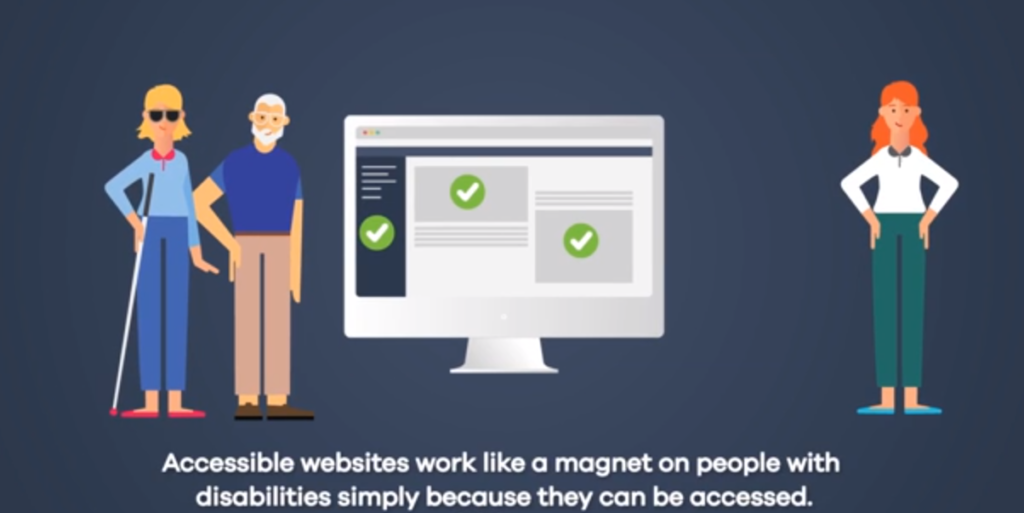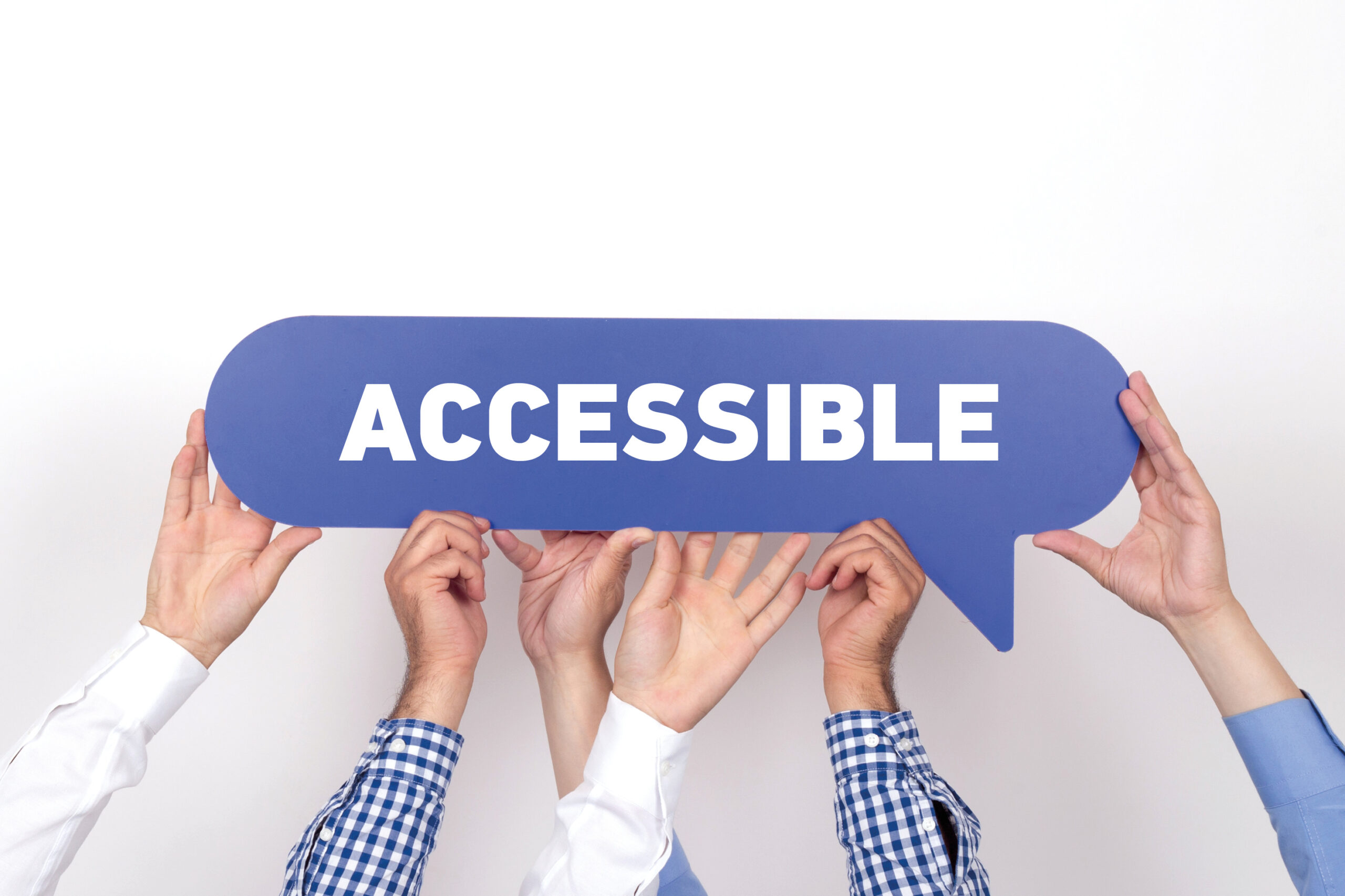The web was designed to work for everyone, regardless of updates and innovations in hardware, software, language, or even users’ dis(abilities). Web accessibility benefits individuals, businesses, and society as a whole. Therefore, it is our collective responsibility to remove accessibility barriers so that allow can enjoy the benefits of using the Internet.
The web eliminates many barriers to communication and interaction that many people face in the physical world, so the impact of disability is drastically changed on the web.
However, badly designed websites, applications, technologies, or tools, however, can create barriers that prevent others from using the web.
Websites and other digital products designed with accessibility in mind provide equal access to everyone, particularly users with disabilities. These include (but are not limited to) sight- , hearing-, movement-, mental and cognitive-related disabilities.

What is Web Accessibility?
Web accessibility is a term that describes the way websites, authoring tools, and web technologies are designed and developed so that people with disabilities can use them.
Web accessibility doesn’t only benefit people with disabilities. It also benefits people without disabilities, for example:
- People with “situational limitations” such as in bright sunlight or in an environment where they cannot listen to audio on their phones such as in a crowded concert
- Older people with age-related ability decline
- Someone with “temporary disabilities” such as a sprained wrist or lost glasses
- People who have limited bandwidth
- Individuals using mobile phones, smartwatches & TVs, and other devices with small screens, or varied input modes.
In this article, I explore various reasons why web accessibility matters; for better businesses, society, and technology
1. Web Accessibility Provides Equal Access to Opportunities
For people with different abilities to have equal access and equal opportunities on the web, it must be accessible. Access to information and communications technologies, including the web, is defined as a basic human right in the United Nations Convention on the Rights of Persons with Disabilities (UNCRPD).
For many people with disabilities, the Web offers unprecedented access to information and interaction. Meaning that the accessibility barriers for audio and visual media can be much more easily overcome by using web technologies such as a website screen reader.
Web accessibility supports social inclusion for people with disabilities as well as others, such as; older people, people in rural areas, and people with low bandwidths.
2. It Promotes Usability
Including accessibility in website content design also improves usability, often resulting in a more intuitive user experience. Accessible online content is likely to be more user-friendly for everyone. Accessible design can benefit people without disabilities too, especially if they are in limiting situations such as:
- Using the keyboard to navigate a website when the mouse is not working
- Adjusting screen brightness to suit the level of light in the environment. Smart invert features are especially handy for this.
- Reading a transcript of an audio or video presentation to reinforce the information learned.
3. It Promotes Inclusion
In a world that is increasingly diverse by the day, it’d be retrogressive to not be mindful of people with disabilities. Making your website accessible is simply the right thing to do. By doing that, you’ll enable people with disabilities to participate in and enjoy the experience of what you have to offer.
4. It’s Required The Law
There are many federal and state laws that require both public and private companies and institutions to make their electronic and web content accessible to people with disabilities. Violating these laws can result in heavy financial implications due to lawsuits and fines. A number of notable companies have been sued for failure to make their web content accessible.
Netflix, Hulu, and Amazon are a few of the big names that have been hit by accessibility lawsuits. The ADA and Section 508 are U.S accessibility laws governing web accessibility. Even though they do not outrightly quote the WCAG standards for web accessibility reference, courts have been known to refer to the WCAG.
So if you want to make your website accessible, these international website standards are a great place to start.
5. There’s a Business Case for Web Accessibility
User satisfaction can be improved with accessible design, especially in a variety of situations, across different devices, and for older users. Enhancing your brand image, driving innovation, and expanding your market reach are just a few benefits of accessibility.
The global market of people with disablities is over 1 billion people with a spending power of more than $6 trillion.
Additionally, accessible websites have better SEO. In other words, accessible websites are ranked higher and appear near the top of search engine results such as Google, Yahoo, or Bing. Furthermore, building an accessible, standards-compliant website at the outset will be less expensive than redesigning it from scratch later.




